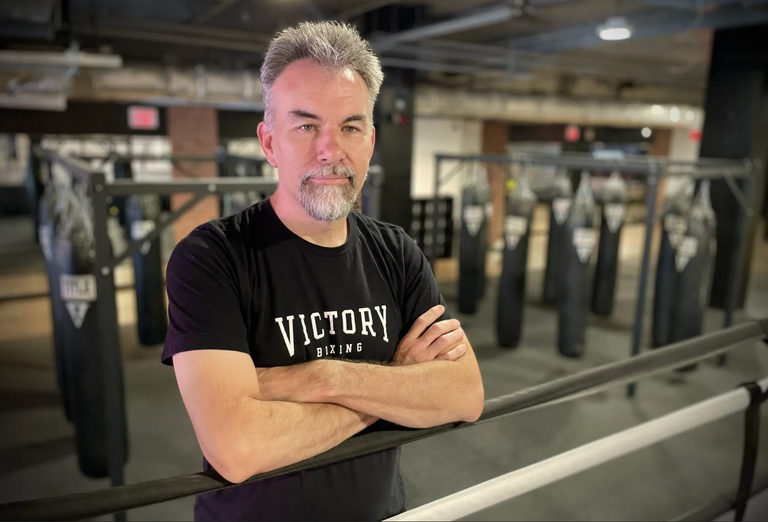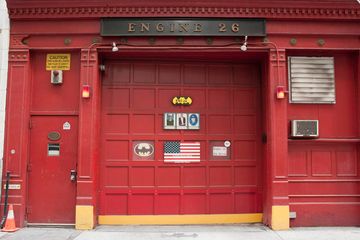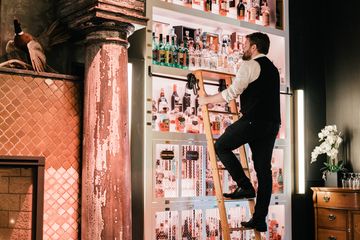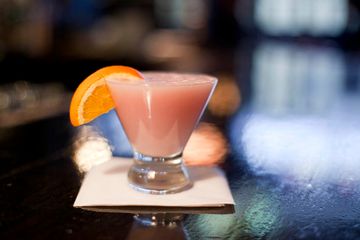
At the Victory Boxing Club, owner and operator John Snow trains everyone from busy executives to recovering stroke patients, with a focus on the psychology behind every swing and jab — and the motto “you don’t have to be in my ring for me to be in your corner.”
A Brooklyn native with a degree in history from Fordham University, Snow first began training fighters at his brother Martin’s gym, the Trinity Boxing Club on Duane Street in Tribeca, where he put his multidisciplinary education to work as a personalized, newfound boxing philosophy.
“As far as taking what I’ve learned in one field and applying it to another – I lifted my idea from Leonardo da Vinci,” John said. “If he was stuck on a mathematical problem, he would work on some art (or vice versa) and it would help him redirect and refocus. That’s why I use everything from Milton Erickson to Noam Chomsky to different learning and language patterns in my coaching. I use all different coaching modalities based on the person’s learning style.”
For John and his brother, getting into the sport was “the total opposite of my family [his mother was a school principal and his father a financial planner] – going to a boxing gym was a different kind of rebellion,” he said. While attending school near Union Square in the 1980s, 15-year old John stumbled upon Gramercy Gym originally run by Mike Tyson’s adoptive father Cus D’Amato, now closed.
“At the time Gramercy and Union Square were so bad, if you walked through the park you got suspended because it was assumed that you were only there to buy drugs,” John recalled. “It took me many, many attempts for me to get up the stairs to the gym — and when I finally got through the door, everything changed.”
Working with legendary trainers like Al Gavin, John was smitten with the art of boxing. He credits the coaches at Gramercy Gym with not only training him to box, but also with teaching him resilience. When, a year after joining the boxing gym, John’s father was diagnosed with ALS: “The gym was a place for me to process it all,” John said, adding, “As a boxer, you have a fierce sense of individuality, but you do have a team around you, and the trainer/fighter relationship is very important – my trainers were instrumental in helping me get through that time and building a fortitude and mental toughness that helped immensely.”
According to John, the key to success in the ring is to give trainees clear goals, structure and a sense of safety to push past their boundaries.
“Boxing appeases the amygdala – the oldest reptilian part of the brain,” John explained. “And it’s really there so that we know we can defend ourselves and take chances. By boxing, we know that we can endure and we can push ourselves harder than other people push us.”
He added: “I tell people, ‘what scares us thrills us’ – that’s what I learned the first day that I finally made it up the stairs of Gramercy Gym.”
It’s a feeling that John hopes everyone who steps through the doors at Victory will experience. “My mission statement for the gym is, ‘everyone has my first day.’ Everyone comes here for their own reasons,” John said.
Once a curious kid climbing up the stairs of the Gramercy Gym, John is now New York’s foremost boxing philosopher. He has trained kids who are now adults, couples who met in his gym and generations of boxers, and considers it an honor to keep the work going at Victory: “It’s heaven on earth – I never work a day in my life. There’s no better place in the world to me than a boxing gym.”
This story was adapted from the W42ST article, "You Don’t Have to Be in My Ring for Me to Be in Your Corner” — John Snow, the Philosopher of Victory Boxing."





